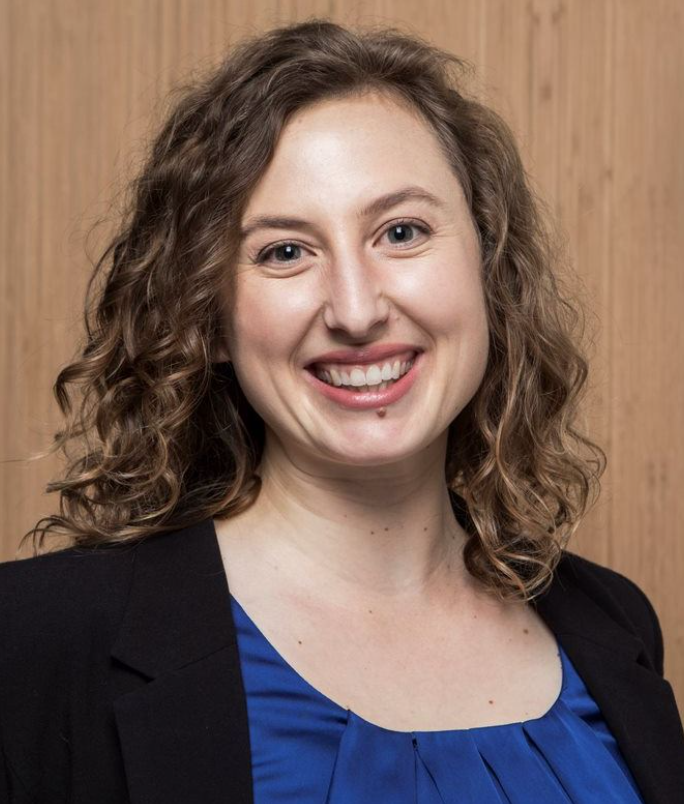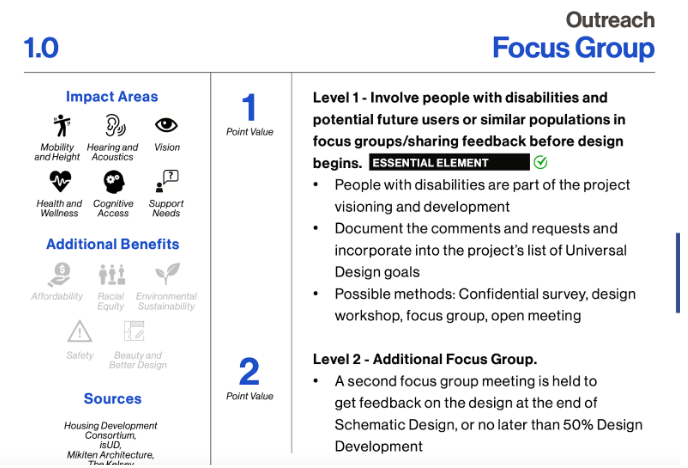The Housing Design Standards for Accessibility and Inclusion equips designers, builders, and developers with guidelines and frameworks for disability-forward housing creation. It highlights cross-disability accessibility and design decisions that are anchored in inclusion. Each month we feature one of our partners and the Element they’re most excited about.
Anne Riggs, AIA, CASp / Associate Inclusive Design Lead / David Baker Architects

This month’s Element of the Month is brought to you by one of our allies and close architectural partners, Anne Riggs of David Baker Architects. An element that has been crucial for her work are Focus Groups which involve people with disabilities sharing insight and feedback before the design process even begins. She talks about the importance of involving end users from the very beginning to ensure an inclusive product. Anne applauds The Kelsey for creating the design standards resource calling it “a power framework for design teams that allows you to keep inclusivity in mind at every step.”- Anne Riggs.
Name of Element: Focus Groups (1.0)
Description: Involve people with disabilities and potential future users or similar populations in focus groups/sharing feedback before design begins. *Essential Element*
- People with disabilities are part of the project visioning and development
- Document the comments and requests and incorporate into the project’s list of Universal Design goals
- Possible methods: Confidential survey, design workshop, focus group, open meeting
Design Category: Design Process
Impact Area(s): Mobility and Height, Hearing and Acoustics, Vision, Health and Wellness, Cognitive Access, Support Needs
Why is this element important to you, personally or for the project?
As an architect seeking to design inclusive and accessible housing, I feel like this element is a critical first step to begin an inclusive design process. By starting with an intentional conversation with community members and advocates, the design team can avoid relying on biased assumptions about what residents need, and instead try to learn what inclusivity really means for a specific community.
Ideally to design someone’s home, you would talk directly with that client to understand their specific needs and wants. In affordable multifamily housing, which is our focus at DBA, it’s generally not possible for us to speak directly to the future residents, as they have not been identified yet. So, the focus group is a valuable opportunity to identify, gather, and connect with people who are most qualified to advocate for the future residents’ needs, perspectives, and interests.
How did this accessibility element change (for the better) the overall project (optional)?
In planning and conducting a focus group workshop for a 160-home affordable and supportive community in San Jose, California, our project team learned how to tailor the Inclusive Design process to our specific project. Rather than just consulting disability advocates for a list of suggested accommodations, we learned to include participants—with various abilities, relationships to disability, and lived experience—who best represent the future community envisioned for the building. For this project, we ended up with an amazing group of local service providers, advocates, and individuals with lived experience who provided eye-opening advice on how we might create safer, more usable, and uplifting spaces for the future residents.
What recommendations would you make to someone designing a disability-forward housing project (related to the design standards)?
Prioritize inclusivity at the start of and throughout the design process, rather than trying to jump straight to results. The Housing Design Standards for Accessibility and Inclusion go beyond a simple checklist of accessible features, giving design teams a powerful framework to identify features that will meaningfully serve a building’s unique community. Taking the time and making the effort to connect with the right people before you begin designing will set you on the right track and allow you to keep inclusivity in mind at every step.
